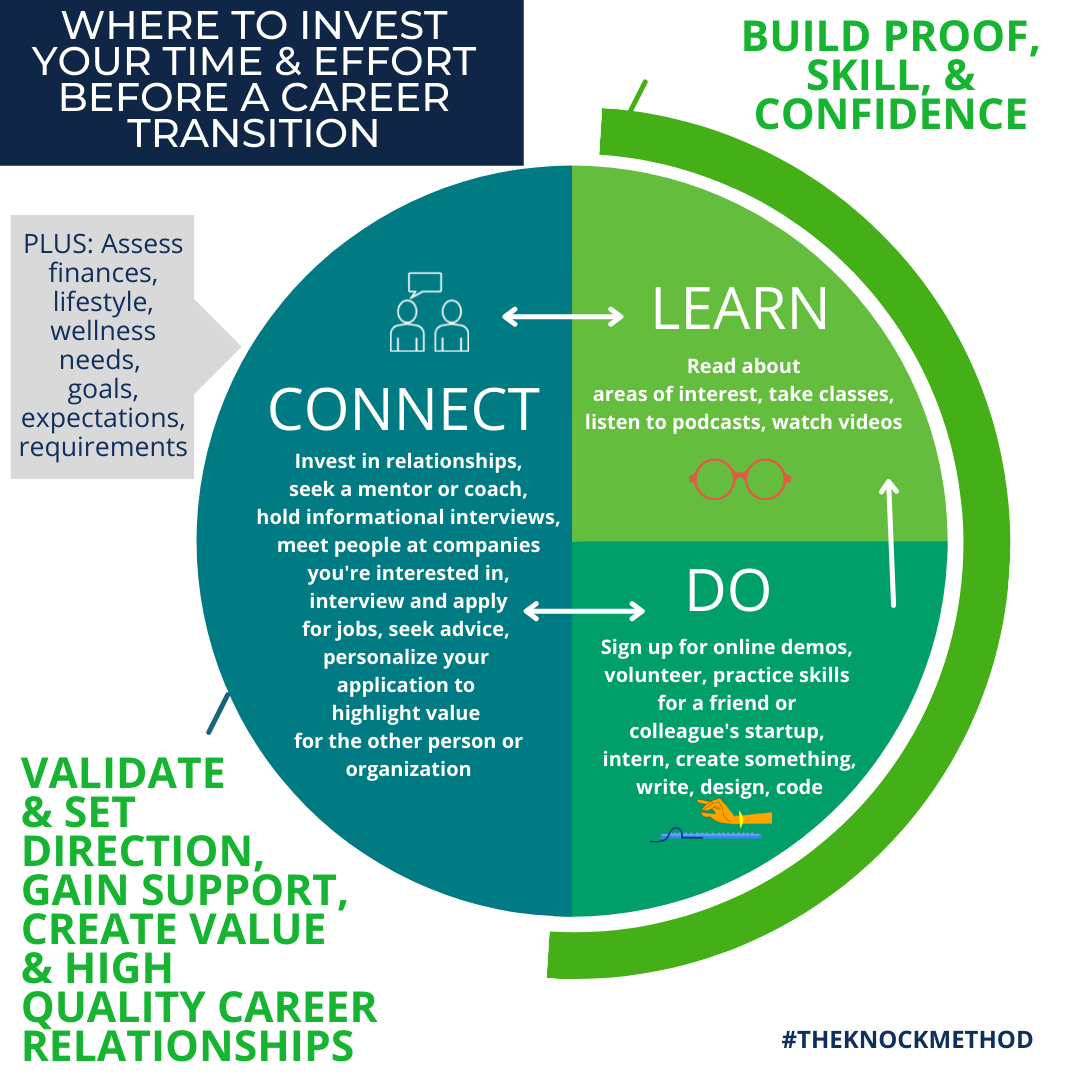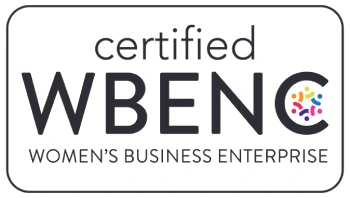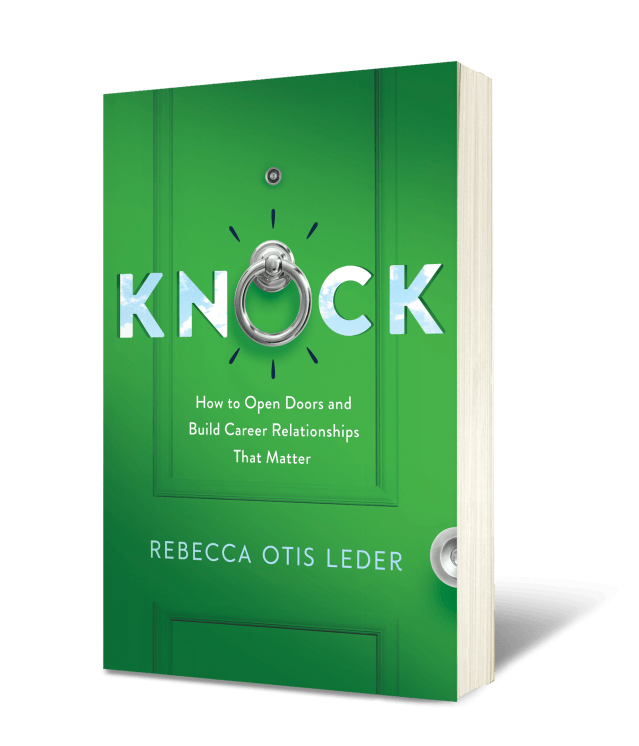Today, I caught up on the phone with a childhood camp friend that I haven’t seen in over a decade. Among the details we shared about our work and personal lives, she said, “I left my job recently…” When we got off the phone, I thought to myself, it’s becoming so much more common to hear that statement, not, “I got a new job”, or “I changed jobs,” or “I was let go from my job”, but “I left my job.”
Many have been calling this wave of leaving jobs amidst the COVID-19 pandemic, The Great Resignation, or The Great Reshuffle (people switching jobs and taking jobs that others left). Did you know that according to the U.S. Bureau of Labor Statistics, 4 million people left their jobs in April, the highest number in a couple decades? Some believe this is actually an optimistic sign and that leaving jobs voluntarily indicates that people have confidence they can find or create a career that meets their needs. With many spending so much more time at home while isolated or in quarantine to curb the spread, or first-responders and hospitality and service-industry professionals being burnt out, you may be answering this single most important question while considering a career change.
I can relate. In fact, I left my corporate job in July to make a full career change into instructional design–in other words, designing adult learning programs focused on career development. While I had designed The Knock Method® curriculum and I teach workshops on how to cultivate high quality career relationships, my former work arrangement wasn’t conducive to me achieving my career goals and it was no longer aligned with the direction I had set for myself. Plus, I was seeking flexibility to pursue a graduate certificate in Learning Design & Technology to upskill–to get formal training in the hard skills that will help me to deliver even more innovative, impactful career development learning and training programs.
Preparing for a Career Change
But, I didn’t just make a quick decision to leave a consistent, innovative job at an incredible company with talented coworkers and an amazing manager. In fact, I lost some sleep over the decision, and the stress I felt weighing my options and trying to align my career direction with the company’s direction negatively affected my physical and mental health at times. I applied and/or interviewed for about 10 jobs over the course of three years and had at least 5X as many conversations, informational interviews, mentoring calls, and countless discussions with my family and friends.
Last week, I got calls from two friends also contemplating leaving their jobs. One weighing a decision to enroll in a masters program that would lead to a more fulfilling career. Another looking for recommendations for career coaches I might know to help set direction and goals.
From the outside, seeing a job update notification on Linkedin, or hearing about one in friendly conversation may appear like people are making snap judgements to change jobs – and all at the same time.
But, in truth, there’s a lot that goes into a decision to leave or change jobs. When I asked one friend how long she had contemplated leaving a job before giving her notice, she replied, “4 years to be honest.” Then, she clarified that she actively applied in two different stints during that time, and that the last job search that led to giving her resignation was 1 year long. Another friend contemplated changing jobs for several months before indicating on Linkedin (privately – there’s an option to keep that only visible to recruiters) that he was open to new opportunities before accepting a job offer with a new company and leaving his previous employer.
Changing your place of employment, how you spend your days, who you work with, how you spend your time and effort, and where you earn your compensation is not a small decision. It can be monumental. And, it’s life-changing.
Making a career change takes time and preparation.
Not to mention, do people have the skills needed to secure and excel in a job or career path in a different field? In my case, I spent 6 years researching, writing, developing and teaching my original career development workshops, and I still came up short on the skills and knowledge to set me up for optimal success in a field (instructional design) different from my area of study (marketing).
You may be considering a job or career change too. You may feel anxious about the change, and uncertain on where to start.
In my book, KNOCK: How to Open Doors and Build Career Relationships that Matter, Chapter 1: Know your Topic and your Contact, is all about preparation when cultivating meaningful career relationships. That’s because preparation not only helps you show up for success, it diminishes your doubts and boosts your confidence to navigate new territory and new job opportunities.
Job or career changes also require lots of preparation up front. Here’s how I recommend spending your time to focus amidst career uncertainty and if you’re seeking a career change:

45% Learning and Doing:
One piece of advice that I give often (and took myself) is to “do the thing you want to do”. What I mean by that is, take action and immerse yourself in the professional world (or industry or company) that you’re looking to be a part of. Just like you would look at photos and read up on visiting a new country and familiarizing yourself with their native language (or at least buying a language book or downloading a translation app) to prepare yourself to have the best travel experience – and get around there – expose yourself to the career, job, industry that you seek to work in.
LEARNING and DOING help you build skills in that new career, build confidence so you feel more comfortable in conversations and settings related to that career AND make a strong impression for those who may be looking to work with or hire you, and build proof that you’re qualified and able to make impactful contributions to the goals and cause of the organization or mission.
- LEARN: You can learn in many ways – by reading, taking classes, listening to podcasts, watching videos, and talking to people (where the CONNECT piece comes in) who are in a particular role, work for a company you’re interested in, or have experience or advice to share. Soak up as much info as you can so you can speak the lingo and understand the challenges and opportunities your desired role, company, or industry is working with.
DO: This is about hand-on learning. Doing also helps you confirm that you like doing the thing you think you want to do! You can practice these new skills through interning, volunteering for a stretch project, creating something like a blog or website or article, coding, or designing. This helps you gain experience to showcase to potential employers and highlight you know how to do the desired work, and have the skills to succeed in the new career.- One tip I love to do for digital skill building and LEARNING is to sign up for free demos for new tools in your area of interest and to test it out – try to do or make something with that tool and get to know how it works, what it does, and how it applies to the industry, company, or role you’re interested in. It’s also a skill/knowledge you can add to your resume when you feel you have basic experience with it to show you have worked with tools and technology your future employer also uses. This means you’re ready to jump right in and don’t need tons of training and ramp up time on a brand new set of tools to do your job effectively.
DOING also shows you’ve put in the work and you’re a self-starter, both qualities future employers will appreciate when you join the team.
45% Connecting:
CONNECTING is a source of learning, validating, reassurance, setting direction, and discovering new opportunities for your career change. It’s also a source of LEARNING. For every informational interview you hold to get a sense of the “day in the life” in a potential new role or at a potential employer, you’re LEARNING knowledge that you can use in interviews, and use to help you refine your job search strategy and narrow in on the opportunities that will be the best fit for you and the employer.
- CONNECTING helps you build community in the new industry or company as you cultivate relationships with those you may partner or work with in the future. Building high quality career connections in your new career is about building long-term, mutually beneficial relationships with mentors, future colleagues, hiring managers, and maybe even future clients. These career relationships as you make your career change can help you feel supported through the change, gain advice and insight from mentors or people who have significant experience in your area of interest, confirm you’re going in the direction you truly want to, and build a community in that new space that you’ll become a part of.
How LEARNING, DOING, CONNECTING WORK TOGETHER
- In the image below, you’ll notice there are arrows pointing in both directions between LEARN and CONNECT, DO and CONNECT, and LEARN and DO. That’s because, you’ll learn through connecting. And, as you learn, you’ll discover new people to meet and companies to explore working with or for. As you DO, practicing new skills, you’ll have specific experiences to talk about when you connect in career conversations, and you may be DOING while working for or with others to gain experience. And, of course, DOING helps you LEARN, practicing skills IS LEARNING.
The Critical 5% Practical Life-Career Assessment
In addition to LEARNING, DOING, and CONNECTING, as mentioned earlier, a career change is a big decision. It not only impacts you and your current and future employers, it can impact your lifestyle, your family, your schedule and work-life balance, even your place of residence. Timing is a huge, important component when making a career change, as is the impact on your finances, your wellbeing and health needs, life and career goals, expectations (salary, culture, job responsibilities), and requirements (deal-breakers or must-haves).
While you’re LEARNING, DOING, and CONNECTING, taking into account your new knowledge, skills, and relationships, weigh these life-career considerations to set focus on the direction you want to go in, when and how to practically make that change, and put steps in place to get there when the time is right.
Having made several career changes over the course of my life, the diagram and guidance above summarize how I recommend you spend your time as you discover, set direction, build skills and experience, build high quality career relationships, and take action to create a career of fulfillment, meaning, and impact.
So what do you think? Where are you spending your time as you prepare for a career change? Is there anything missing in your list of considerations, fears, doubts, or “what-if’s”? Is this helpful? What other advice would help you navigate making a career change? Leave a comment below.
Get the Bestselling Career Development Book, KNOCK
Looking to build high quality career connections as you prepare for a career change?
- – Download these free career development resources
- – Pick up your copy of KNOCK: How to Open Doors and Build
Career Relationships that Matter, my bestselling career
development book - – Sign up for The Knock Method email list to get new career
development tips, - – Get career development podcast recommendations,
- – Find professional networking events,
– Set up a workshop for your colleagues or group of job seekers.


